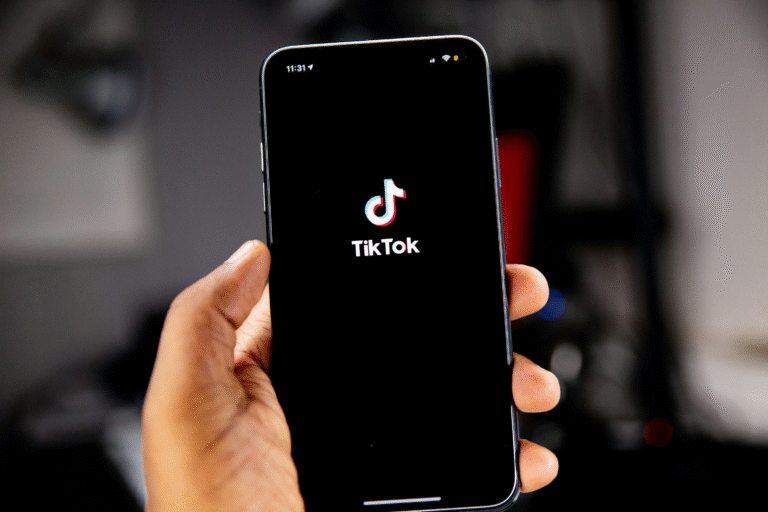Retailers in the United States have always fought for attention during the holiday shopping rush, pouring huge budgets into festive campaigns, flashy website banners and search engine advertising. Yet this year, a quieter and far more unconventional audience is shaping their moves. It is not shoppers they are chasing first, but the artificial intelligence systems that now guide a growing share of consumer decisions. The shift feels almost surreal: companies that once calculated every step around human search behaviour are now redesigning their online presence to impress algorithmic advisors. The holiday season is expected to generate close to 253 billion dollars in online spending across the country, and much of it will still come from predictable pathways like website visits and typical search-engine queries.
These paths have long rewarded the biggest advertisers, especially those with deep pockets to bid on competitive keywords. But there is a new layer added to the consumer journey. People are increasingly asking ChatGPT, Gemini and other conversational AI systems for gift suggestions, product comparisons and shopping shortcuts. Instead of scrolling through ads, many shoppers simply ask a chatbot what they should buy for a teenager who loves gaming or a grandmother who prefers practical stocking fillers. This shift may be subtle, but it is powerful enough that retailers are treating it as an emerging frontier. They can sense that the usual playbook of digital advertising is not enough. If AI becomes a major recommender during the holidays, then businesses need to show up where those systems look for information. It is a race not just to appear on a list of search results, but to become part of the invisible knowledge base these models draw from when guiding a shopper. Brian Stempeck, who leads the generative engine optimization firm Evertune.ai, describes the mood among brands with a mixture of urgency and curiosity. “We’ve seen brands that previously were putting out three or four new blog posts or articles a month, are now trying to do 100 or 200,” he said.

His comment reflects a scramble that feels almost like preparing for a new kind of exam: companies want to feed AI systems as much fresh, clear, structured information as possible, hoping these models will internalize their product details and recommend them. Evertune.ai charges “around $3,000” per month for helping retailers build AI-friendly online footprints, and its client list now includes apparel and footwear companies that would once have focused exclusively on Google and Meta ads. There is a very human reason behind this rush. When shoppers engage with AI, they do so with a remarkable level of trust, treating the models almost like knowledgeable companions rather than automated tools. People often skip the traditional comparison process. Instead of hopping from website to website, many simply ask an AI agent for guidance and accept its answer if it sounds reasonable.
Retailers understand that being invisible to these systems could mean being invisible to millions of potential customers. For years, digital marketing revolved around understanding how humans typed queries like “best winter boots” or “affordable noise-cancelling headphones.” Advertisers crafted campaigns around these terms and relied on the massive engines of Google and Meta to match them with the right audience. But AI models search differently. They scan through structured data, articles, reviews and product pages, weaving all of it into natural conversation. That means companies need to optimize not only for human readers but also for machine interpretation.
Many retailers are experimenting with AI-specific sections on their websites, dedicated product summary hubs and machine-friendly catalogues. These pages are written with clarity, consistency and structure so that large language models can easily understand and retrieve the information. The approach mirrors the early era of search engine optimization, when websites adjusted their layouts and metadata to appear on Google’s radar. The difference now is that AI systems do not simply rank links; they synthesize answers. So if the model prefers one retailer’s structured and trustworthy information, that brand gains an advantage without relying on ad spend. Some companies are thinking beyond search visibility and testing direct integrations with AI platforms. They envision shoppers placing orders inside chat interfaces without needing to open separate apps or browser windows. If those experiments gain momentum, the entire flow of holiday shopping could change. Brands are cautious but hopeful, sensing an opportunity to become the default choice in a world where decisions are increasingly delegated to algorithms.
The general public is still adjusting to this new landscape. Many consumers enjoy the simplicity of talking to an AI about gifts, while others worry that their buying choices might become too influenced by unseen systems. There is also a lingering question of fairness. Big brands can invest in AI-optimization platforms and content production at a scale smaller businesses cannot match. If large language models start favouring the companies with the most resources, it might replicate the very imbalance that search engine advertising created in the first place. Yet the transition is already happening, whether the industry is ready or not. Retailers are redesigning digital storefronts that are not just visually appealing but machine-readable. They are writing more frequently, explaining products in plain language and crafting narratives that feel authentic enough for humans yet structured enough for AI. Some executives privately admit that they do not fully understand how AI systems evaluate content, but they are experimenting anyway because the alternative is falling behind.
There is a lived reality beneath all these strategic shifts. A marketing team somewhere is spending late nights rewriting product descriptions to make them more conversational. A smaller retailer might be trying to decide whether investing in AI-friendly content is worth taking budget away from traditional advertising. A CEO may be asking whether the company is ready to compete for visibility inside an environment shaped by machine reasoning rather than human search behaviour. The uncertainty is palpable, but so is the sense of possibility. Retailers have navigated technological disruptions before, from the rise of mobile shopping to the spread of social commerce. Each transition forced them to reimagine how people discover products. The emergence of AI-guided shopping feels different, though. It is faster, more unpredictable and more deeply intertwined with how people think and choose. It is no longer just about ranking on a search page; it is about becoming part of the answer itself.












